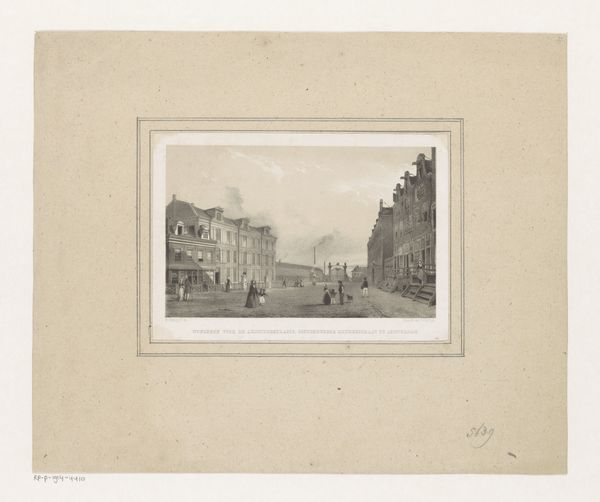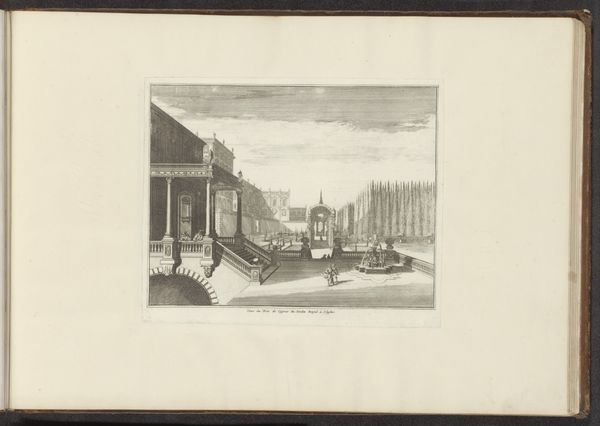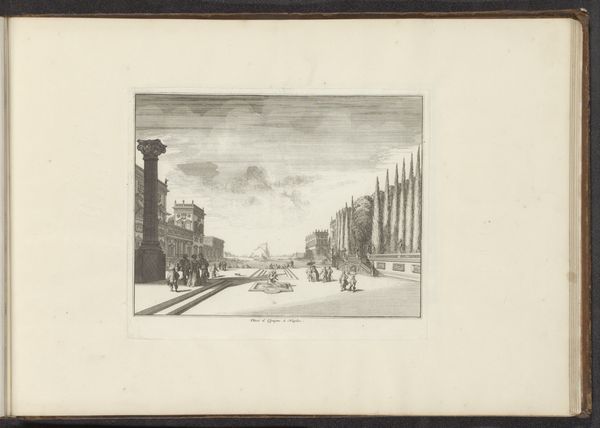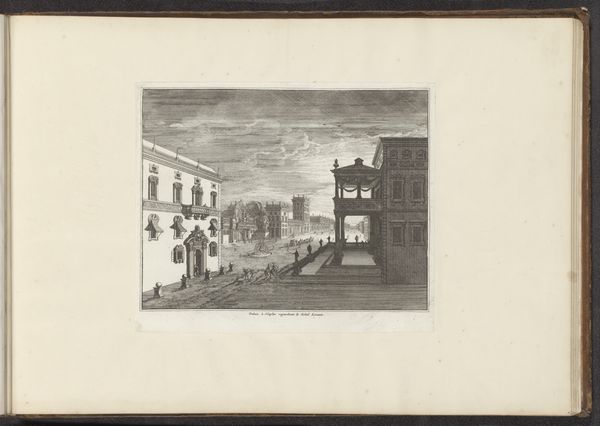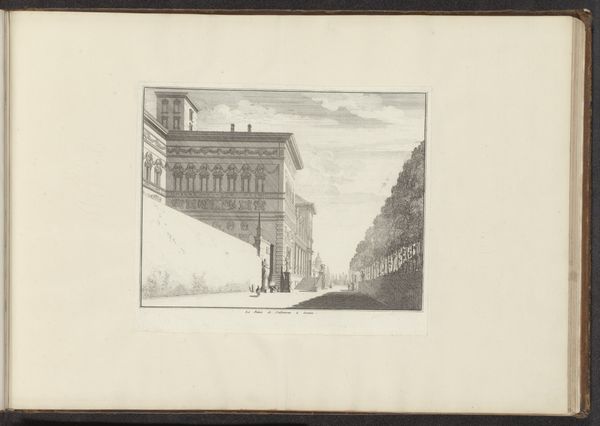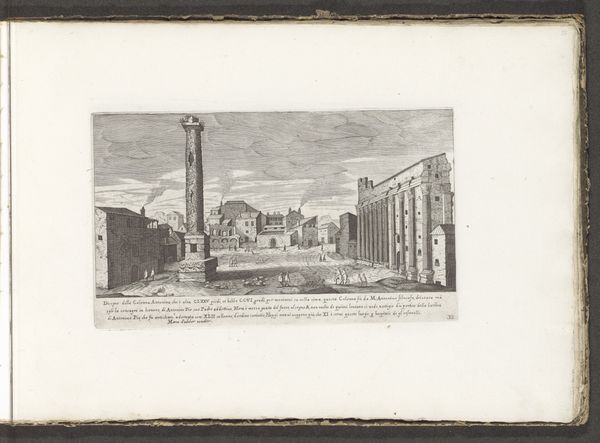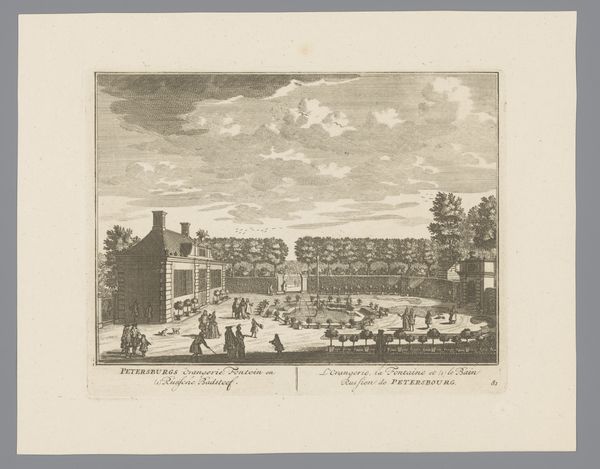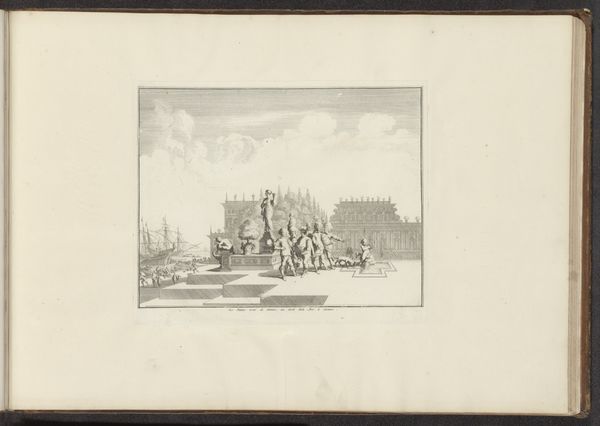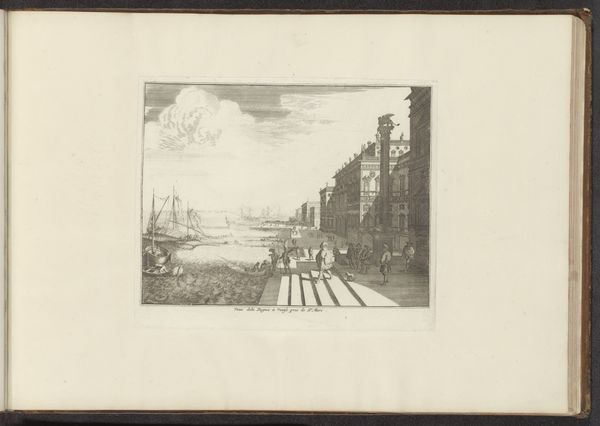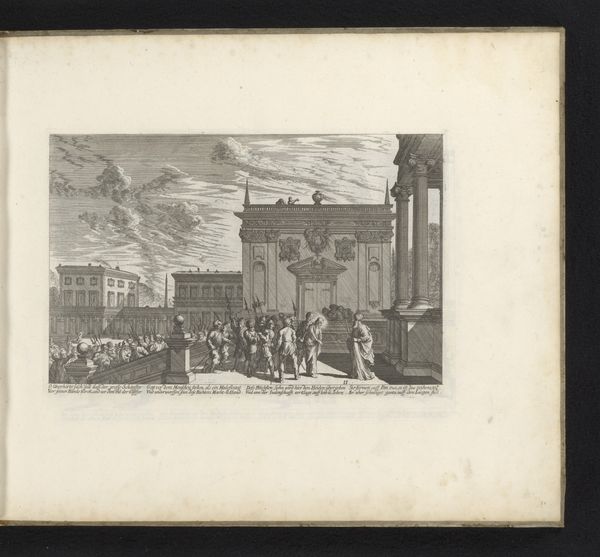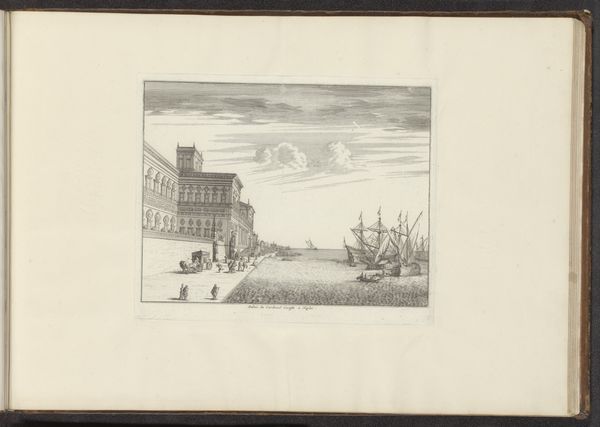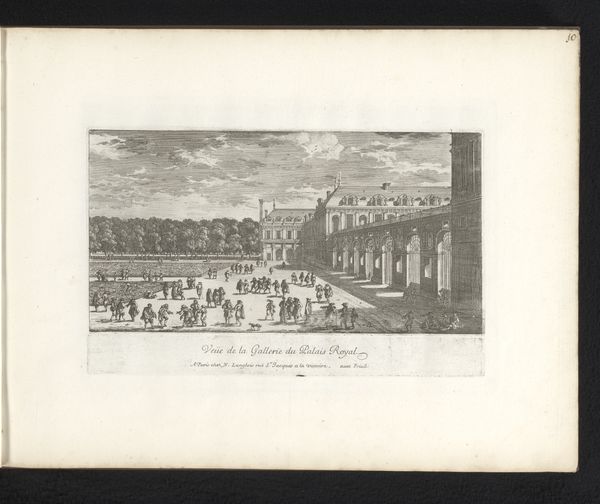
drawing, graphic-art, print, metal, etching, paper, ink, engraving
#
drawing
#
graphic-art
#
venetian-painting
#
baroque
# print
#
metal
#
etching
#
landscape
#
paper
#
ink
#
cityscape
#
italian-renaissance
#
engraving
Dimensions: height 220 mm, width 267 mm
Copyright: Rijks Museum: Open Domain
Editor: Here we have "Gezicht op het Canal Grande te Venetië," or "View of the Grand Canal in Venice," dating from around 1700 to 1710. It's an engraving, printed with ink on paper. What immediately strikes me is the sense of depth created despite the limited tonal range. What compositional elements stand out to you? Curator: The print's success lies indeed in its management of spatial recession using linear perspective. Observe how the artist employs converging lines to lead the eye deep into the pictorial space. Furthermore, consider the way the artist utilizes the subtle gradations of tone to simulate atmospheric perspective. Notice the sky and the strategic use of negative space; how might these affect our interpretation of this cityscape? Editor: I hadn't thought of the sky as actively contributing, more of a backdrop, really. You're suggesting it has equal importance with the Venetian architecture and Grand Canal? Curator: In the structure of the work, each component holds visual weight. Consider the buildings, positioned as anchoring elements to the left and right, framing the canal's expanse. And contemplate the relationship between the stark linearity of the architecture versus the atmospheric rendering of the sky. It's this visual tension that sustains the eye's interest. Editor: So it's less about Venice itself, but how the artist makes all these components work together. The architecture isn’t the focus, just another aspect? Curator: Precisely. The architectural details are not ends in themselves, but contribute to a formal structure based upon spatial relationships and tonal modulations. The technique employed further supports this, as engraving lends itself well to precision, a deliberate act mirroring the structured environment depicted. Editor: This way of analysing encourages a focus on how meaning emerges through form. It's broadened my understanding of how to ‘read’ the piece. Curator: And by recognising the aesthetic and relational qualities in visual art, we understand more clearly not just the artwork but our encounter with art.
Comments
No comments
Be the first to comment and join the conversation on the ultimate creative platform.

